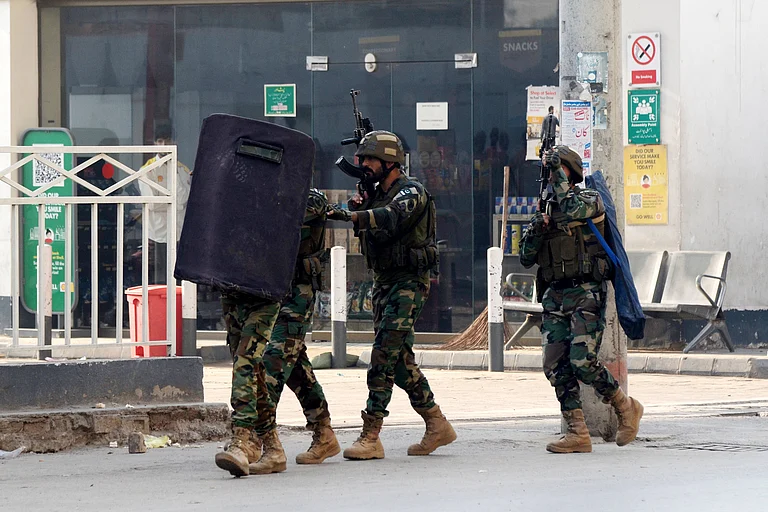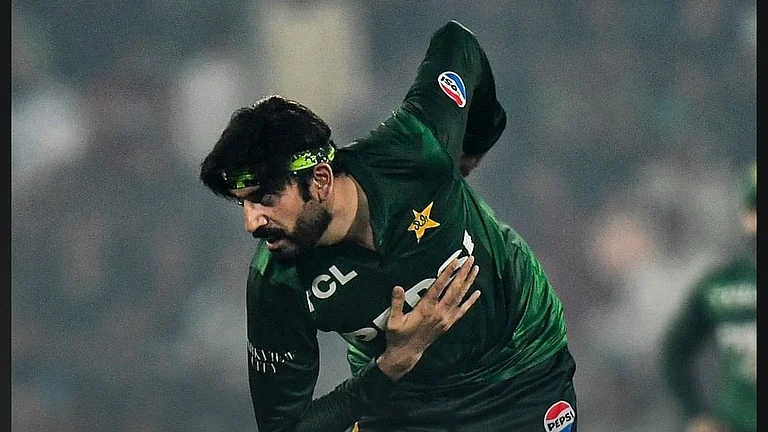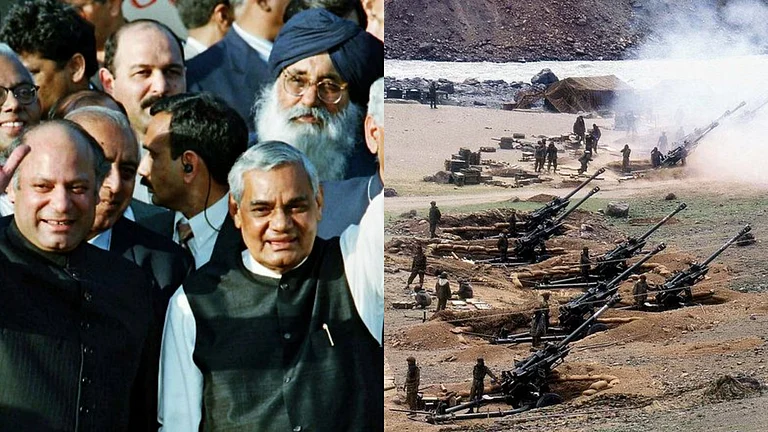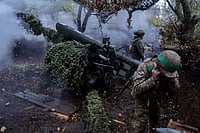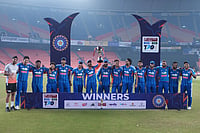India is marking the 25th anniversary of the 1999 Kargil War on Friday, July 26, as ‘Kargil Diwas’. The war, also known as Operation Vijay, was the third major war between India and Pakistan since the partition in 1947.
As we celebrate the victory of the Indian forces, let us understand how the Kargil war stood out from the other wars fought between India and Pakistan.
Notably, the Kargil War was triggered by the infiltration of the Kashmiri district at the hands of Pakistani troops who disguised themselves as Kashmiri militants and insurgents in May 1999. With the combined efforts of the Indian Army and the Air Force, the soldiers were able to remove the infiltrators from the region, regaining control of their posts in Kargil.
THE FIRST KASHMIR WAR
The first war between India and Pakistan (1947-1948), also known as the First Kashmir War, was fought over the 'princely state' of Jammu and Kashmir, which the latter nation had been trying to annex by any means.
This marked the first major conflict between India and Pakistan since the partition of the two newly independent nations.
Notably, Kashmir was of great significance because of its strategic location. Even before the establishment of Pakistan, Kashmir was surrounded almost on three sides by foreign states, including Tibet, China, and Pakistan.
Maharaja Hari Raj Singh of Kashmir had agreed on a Standstill Agreement with both India and Pakistan to postpone taking a decision on its accession. In August 1947, he sent a standstill agreement to both the nations via telegram, however only Pakistan signed it.
It was when Pakistan sent tribal militias to invade the valley, that the Maharaja's concerns grew over the protection of his state.
According to the Indian military sources -- as cited by the Ministry of Defence -- the Pakistani Army's plan was called 'Operation Gulmarg', which was to be put into action as early as August 20, 1947.
When the tribal militias were launched by Pakistan from Waziristan to try and capture Kashmir, the armies of both the nations got involved.
The Government of India, not having signed the standstill agreement with Kashmir, had been keeping a close eye on the happenings in the state, however it was only on October 24, 1947, that it found out about the invasion of the valley.
A bewildered Maharaja Hari Singh then requested the Indian government to send troops to protect Kashmir from the invaders. However, the Defence Committee of the Cabinet -- after several rounds of discussions -- had decided that Indian troops will be sent to Kashmir only after its formal accession to India.
On October 25, 1947, Maharaja Hari Singh signed the Instrument of Accession brought to Kashmir by VP Menon (Ministry of States Secretary in the Indian government).
Jammu and Kashmir – legally, morally and constitutionally – became an integral part of India on the evening of October 26, 1947, after the Governor-General of India accepted the legal document of accession.
Soon after Indian troops were airlifted to Srinagar, the state capital of Kashmir, to protect the state from invaders.
The Indian army troops along with the J&K State forces removed the threat to Srinagar by recapturing Uri on November 13, 1947. During this struggle, some major battles including the Battle of Badgam, the fall and recapture of Jhangar, the Battle of Tithwal took place.
The First Kashmir War only came to an end when both the countries, after long negotiations, agreed to a cease-fire.
A United Nations (UN) Commission resolution laid out the rules for the ceasefire on August 13, 1948, which were adopted by the commission formally on January 5, 1949. This required Pakistan to withdraw its regular and irregular forces from the region, while allowing India to deploy minimal forces within the state to maintain the law and order situation, thus bringing an end to the war.
THE INDO-PAK WAR OF 1971
The First Kashmir War was the start of many conflicts between India and Pakistan. The two nations fought yet another significant battle in 1971, which was triggered by the independence movement of East Pakistan, the Bangladesh of today – known as the Bangladesh Liberation War.
The war, which began on December 3, 1971, was sparked by the Bengali nationalist movement in Pakistan. The nation, which was partitioned from India, had two prominent parts - West and East Pakistan - the former dominated by the Muslim League, while the latter with a massive Bengali population.
Though East Pakistan's Sheikh Mukhbir Rehman of the Awami League party had won the provincial elections in 1954 with a landslide victory, west Pakistan was not willing to let him form the government in the country.
This triggered a cultural and language-based conflict between the two sides, one that lasted as long as East Pakistan didn't become Bangladesh.
In 1966, Mukhbir Rehman led a movement in east Pakistan, a 6-point movement. These were six demands for east Pakistan, including a federal state, separate currency and fiscal policy, trade, taxations, forex reserves, separate army and naval force.
However, not pleased by Rehman's intentions, Pakistani army struck at the Bengali Independence movement with 'Operation Searchlight' in March 1971, killing several Bengalis in the province.
Then against the Pakistan Army, the Bengali population launched the Mukti Bahini movement. Indian forces had also backed Bangladesh in the eastern frontier, expecting greater peace from the region.
The battle, which lasted for 14 days, saw Pakistani forces convincingly defeated in East Pakistan, with about 93,000 of their soldiers taken prisoner. The Indian army, Navy and Air Force, all showed exemplary courage and grit in the war.
In the West as well, Indian troops had occupied a larger part of the Pakistan territory at the time.
As per the Ministry of Defence, around 600 officers and men of the Indian Army were decorated with gallantry awards.
The unconditional surrender of the Pakistani forces on December 16, 1971 brought an end to the war on the Eastern front. Following this, the Indian Prime Minister declared a unilateral ceasefire on December 17, 1971.
On July 2, 1972, the Shimla Agreement was signed by the Prime Ministers of India and Pakistan. This peace treaty "put an end to the conflict and confrontation that have hitherto marred their relations" and to conceive the steps to be taken for further normalising the relations while also setting out principles that should govern any future interactions between the nations.
THE KARGIL WAR 1999
The Kargil war, which began in May 1999, was triggered by the infiltration of the Kashmir district by Pakistani troops disguised as militias and insurgents.
The war, which began shortly after the signing of the Lahore declaration in 1999, is thought to be the brainchild of the then Pakistan Army Chief General Pervez Musharraf.
Notably, the Lahore Declaration was signed by Indian Prime Minister Atal Bihari Vajpayee and his Pakistani counterpart Muhammad Nawaz Sharif on February 21, 1999.
On May 3, 1999, as Army patrols were sent out in Kargil after receiving information about the infiltration, five soldiers were captured and killed by the Pakistani troops.
The war between India and Pakistan was visibly surging when Musharraf paid a visit to Kargil and the Indian Army's ammunition dumps in the district were completely destroyed.
The first air to ground strike was launched by the Indian Air Force on May 26, followed by the Indian Army's Operation Vijay to remove the infiltrators from the Indian territory of Kargil.
The war came to an end on July 26, 1999, after two months of violent confrontations between the two countries. This day is what Indians have been celebrating as the 'Kargil Diwas'.
THE DIFFERENCE
Now that we have taken an overview of the three major India-Pakistan wars, it is worth mentioning that the Kargil war was the first time that two "nuclear-armed countries" were at war.
Both India and Pakistan had declared themselves as nuclear powers the previous year, that is in 1998, leading to growing security concerns between the nations given the pre-existing tension over Kashmir.
The nuclear power aspect made the war a critical situation for India and Pakistan's bilateral relationship.
Now, as per the Ministry of Defence, the Kargil war had three phases; "First, Pakistani infiltration across LoC and occupation of posts to bring down artillery fire on the main highway (NH 1A) and Kargil town. Second, Indian Army's discovery of the infiltration and mobilising forces to respond to it. Third, major attacks by Indian forces resulting in recapture of most of the posts and withdrawal of residual Pakistani troops back across the LoC."
And during this war, all three services -- Army, Air Force and Navy -- had come together to launch the tri-service joint plan.
The war, which was primarily concentrated in just one region -- Kargil -- was the longest conflict that took place between the two nations. Fought in high-altitude mountains and locations along the Line of Control (LoC), the war resulted in a decisive victory for the Indian nation.
Kargil Diwas remains a significant event for the entire nation every year on July 26, with defense veterans and soldiers along with the citizens of the country celebrating the victory of the Indian forces. But sadly, the tensions between India and Pakistan continue to remain on the rise even after 25 years of the Kargil War.
Meanwhile, India has refurbished its stance against any terror-related activity, reiterating the nation's "zero tolerance towards terrorism" policy.










